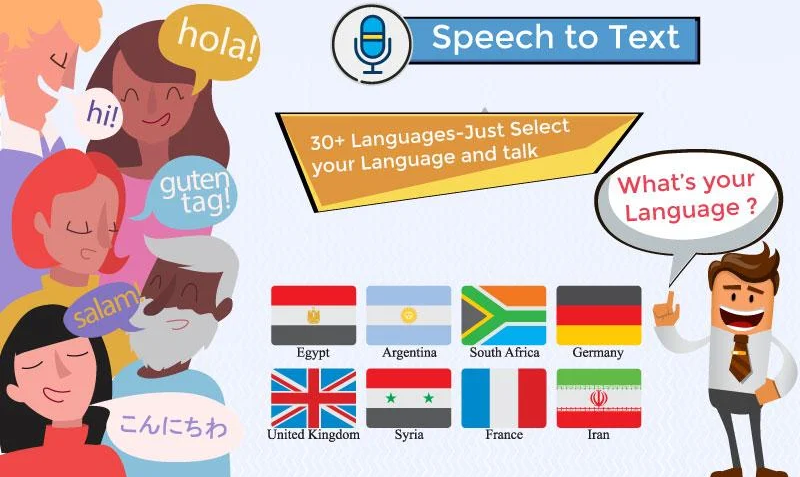
Speech to Text Mastery for Tech-Savvy Small-Business Owners
Introduction
Running a small business means you’re constantly multitasking; inspirations strike while your hands are occupied.
That’s where speech to text steps in.
With just a microphone, your voice transforms into organized, searchable text—saving time and slashing errors.
In this guide, we’ll explore why forward-thinking owners aged 30-55 are adopting voice technology, how real-time transcription works, and which tools deliver the biggest bang for your buck.
Sound exciting? Let’s get started.
What Is Speech to Text & How Does It Work?
At its core, speech to text is the process of converting spoken language into written characters through algorithms and machine learning.
The pipeline typically includes:
- Acoustic modeling to identify phonemes
- Language models that determine the most probable word combinations
- A decoding layer that stitches predictions into coherent sentences
AI has pushed accuracy from roughly 75 % ten years ago to well above 95 % for mainstream English dialects (see NIST).
The Business Case: Why Entrepreneurs Can’t Ignore Speech to Text
Entrepreneurs face tight margins and even tighter schedules.
speech to text addresses core pain points:
- Rapid Documentation: Convert sales calls into CRM notes instantly.
- Enhanced Focus: Capture brainstorms hands-free during commutes.
- Reduced Burnout: Less manual typing equals lower fatigue for lean teams.
A 2023 study by MIT found companies using speech tech reduced documentation time by 38 %.
Choosing the Right Speech to Text Tool: Must-Have Features
Not all platforms are built alike.
When comparing voice to text products, prioritize:
1. Accuracy & Language Support
- Look for ≥95 % accuracy on benchmarks.
- Check regional accent and language packs you’ll actually use.
2. True Real-Time Performance
- Opt for sub-300 ms delays for seamless meeting captions.
3. Enterprise-Grade Security
- Insist on AES-256 encryption and SOC 2 compliance.
- HIPAA or GDPR requirements? Verify certifications.
4. Integration & API Access
- Connect easily with Zoom, Slack, or your CRM.
A feature checklist like the one above ensures you don’t pay for bells and whistles you’ll never need.
Practical Applications of Speech to Text for Small Businesses
Still wondering if voice to text fits your niche? Take a look at these micro case studies.
- Law Firm (5 employees): Shifted to voice dictation for drafts, gaining 15 extra billable hours monthly.
- eCommerce Brand: Real-time transcription of TikTok Lives boosted subtitle engagement by 34 %.
- Consultancy: Meeting transcripts fed into an AI summarizer, generating shareable memos in 60 s.
Implementation Roadmap: Setting Up Speech to Text in Your Workflow
Implementation free speech to text doesn’t have to be painful.
Follow this streamlined plan:
- Audit Needs: Identify high-volume typing tasks like reports and chat transcripts.
- Select Platform: Match the feature checklist to vendors; request a free trial.
- Integrate & Test: Connect via API or out-of-the-box plugins.
- Train Team: Host a 30-minute workshop on best dictation practices.
- Measure & Iterate: Measure typing hours saved during the first month, then optimize.
Budget tip: Start with a pay-as-you-go plan to monitor usage before committing.
Pitfalls & Myths: What Can Go Wrong and How to Fix It
Even stellar tech faces roadblocks.
Below are common snags and quick fixes:
| Challenge | Root Cause | Solution |
|---|---|---|
| Low Accuracy | Background noise | Use noise-canceling mics; enable auto-gain control. |
| Slow Latency | Weak internet | Use wired connections or allocate more CPU. |
| Privacy Concerns | Unclear policies | Choose on-prem or private-cloud deployment. |
What’s Next for Speech to Text Technology?
The horizon looks bright.
Expect these breakthroughs:
- Contextual AI: Tools will detect sentiment and intent in real time.
- Edge Processing: On-device models cut latency to near zero and safeguard privacy.
- Expanded Languages: Vendors aim to cover over 1,000 dialects soon.
- Seamless Translation: Expect live speech-to-speech translation that shatters language walls.
Early adoption of beta releases keeps you ahead of rivals.

Conclusion
Picture saving five hours weekly simply by dictating rather than typing—that’s the promise of speech to text.
We’ve covered mechanics, features, case studies, and future trends.
Stay ahead of the curve.
CTA: Try a speech to text platform today and let us know the gains you achieve.
FAQ
- What is speech to text and how accurate is it?
Speech to text tools use AI to turn voice into text, achieving about 95 % accuracy for many languages.
- Is voice to text secure for sensitive data?
Yes—leading vendors offer end-to-end encryption, HIPAA, and GDPR compliance to keep your transcripts safe.
- Can I use real-time transcription during video conferences?
Yes, many speech to text services plug into conferencing tools like Zoom and Teams, providing live captions on the fly.
- Does speech to text work with different accents?
Modern engines train on diverse global datasets, so they handle a wide range of accents with high accuracy.
- How much does a voice dictation platform cost?
Costs vary: free plans exist, pay-per-minute averages \$0.006, and many small firms spend less than \$50 monthly.